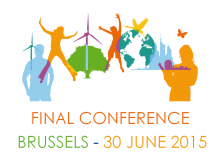The study specifies potential bottlenecks in the supply of material resources due to effective climate policy in the longer term towards 2050, but indicates longer duration developments as well. A second part of the analysis is about how such bottlenecks may strategically be overcome. The focus is on the metallic elements.
Demand for climate related technologies is additional to rising demand due to economic growth in general and the build-up of infrastructure in developing countries specifically. Growth is not neutral as to shares of different metals, but increasingly shifts to smaller amounts of much larger numbers of metals, as related to ICT developments. This tendency is also present in climate and energy technologies. The question which metals will be required, and in which quantities, depends on the technologies being used, their metals-specific composition and the volumes involved. Neither of these variables can be specified with any certainty.
However, here are substantial similarities between groups of technologies in their metals demand that make scenarios based on specific technology assumptions relevant, as representative for the broader but mostly unknown domain of future technologies. Because of this, the study used one of the most technology specific scenarios for 2050 now available, see Koning et al 2014. It is a detailed input-output specification of the economy in 2050.
The study finds that
- Uncertainty on supply and demand of metals has always been substantial and will remain so.
- Successful climate policy would require substantial additional supply, which could be part of the usual investment considerations on metals and mining firms.
- The high uncertainty on having successful climate policy will lead to substantial though temporary shortages.
- Substitution can to some extent avoid reliance on metals with supply uncertainty.
- Shortages, as severe price peaks with limited supply reaction, will be most severe for metals:
- where increasing the mining and processing capacity takes a long time, with copper as a prime example (>20 years)
- with a low concentration metals co-produced with bulk metals like some rare earths, and indium and tellurium in some iron, zinc and copper ores
- where near monopolistic supply makes disturbance possible.
- Monopolistic behaviour can best be approached through antitrust policy where firms are involved. Where governments can play that role strengthening of WTO rules seems the only direct policy option, combined with research to create substitution for the metals or products containing that metal.
- When capacity can be increased with short lead times and without substantial price rises, such shortages will hardly play a role, as for lithium.
- Avoiding the reliance on metals with potential shortages seems a key strategy for avoiding bottlenecks in the development of climate technologies.
Attachment:
Citation:
Funding:
Year of publication:
Number of pages:
Table of contents:
|
|
Executive summary |
6 |
|
1 |
Introduction |
11 |
|
2 |
Materials and Methods |
14 |
|
2.1 |
Analytical framework |
14 |
|
2.2 |
Electricity generation technologies |
15 |
|
2.2.1 |
Photovoltaics |
15 |
|
2.2.2 |
Wind |
15 |
|
2.2.3 |
Hydroelectricity |
16 |
|
2.2.4 |
Natural Gas, Coal & CCS |
16 |
|
2.2.5 |
Nuclear |
16 |
|
2.2.6 |
Concentrated solar power |
16 |
|
2.2.7 |
Electricity production mix |
16 |
|
2.3 |
Land vehicles |
17 |
|
2.3.1 |
Number of vehicles |
17 |
|
2.3.2 |
Metal requirements |
18 |
|
2.4 |
Infrastructure and building construction |
18 |
|
2.5 |
Transmission & buffering |
19 |
|
3 |
Results |
20 |
|
3.1 |
Metal resource use by energy generation technologies |
20 |
|
3.2 |
Metal resource use by new cars |
22 |
|
3.3 |
Metal resource use in construction |
23 |
|
3.4 |
Total metal resource use |
23 |
|
4 |
Discussion |
27 |
|
4.1 |
Metal resource use in 2050 |
27 |
|
4.2 |
Metal resources used until 2050 |
27 |
|
4.3 |
Supply rate constraints |
29 |
|
4.4 |
Regulatory and political barriers |
30 |
|
4.5 |
Markets and corporations |
31 |
|
4.6 |
Substitutability |
31 |
|
4.6.1 |
Elemental and resource substitution |
31 |
|
4.6.2 |
Functional substitution and dematerialization |
31 |
|
4.7 |
Recycling |
32 |
|
4.8 |
Missing information |
33 |
|
5 |
Conclusions |
35 |
|
6 |
References |
36 |


